For many people, fruit is considered one of the healthiest and safest foods to eat.
However, when you’re on a low-sugar diet or have medical conditions such as diabetes that make blood sugar regulation more difficult, your choices of fruits to snack on can become more limited.
Unfortunately, many fruits are pretty high in sugar, meaning that people with high blood sugar have to avoid them altogether or eat very small servings.
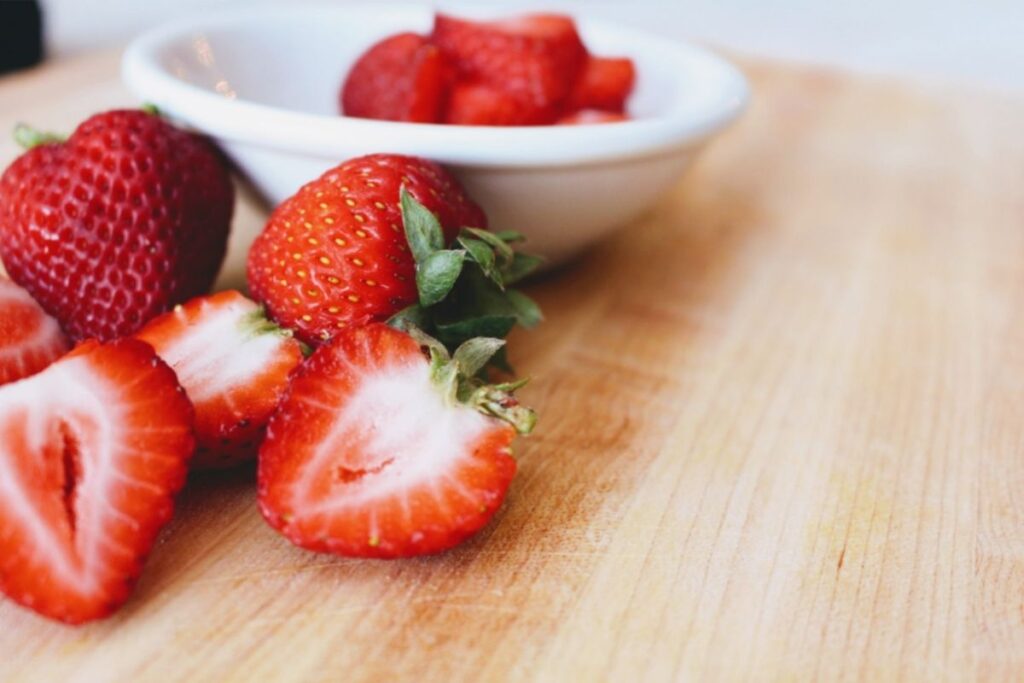
With that being said, there are still plenty of fruits with relatively low sugar to choose from.
If you’re looking for low-sugar fruits to eat as part of a healthy, balanced diet, take your pick from these 21 delicious fruits!
Raspberry (Rubus Idaeus)

Raspberries are not only some of the most popular berries in the world, but they are also one of the healthiest fruits in terms of low sugar.
A single cup of raspberries contains just 5 grams of sugar, which is extremely low compared to most fruits.
Due to being high in fiber, they make a filling snack and help with digestion.
Blackberry (Rubus Fruticosus)
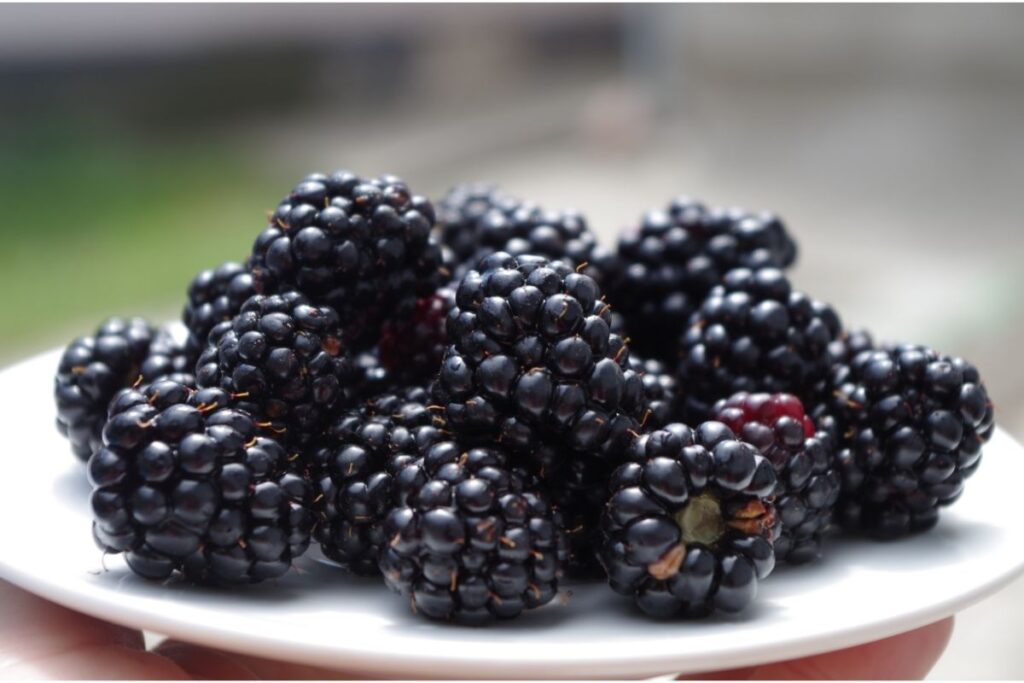
Another low-sugar berry species, blackberries have a slightly higher sugar content than raspberries, at 7 grams per cup (64 grams).
However, this is still a healthier sugar content than many fruits have, and blackberries offer the additional benefit of being packed full of antioxidants to help fight inflammation and boost immunity.
Peach (Prunus Persica)
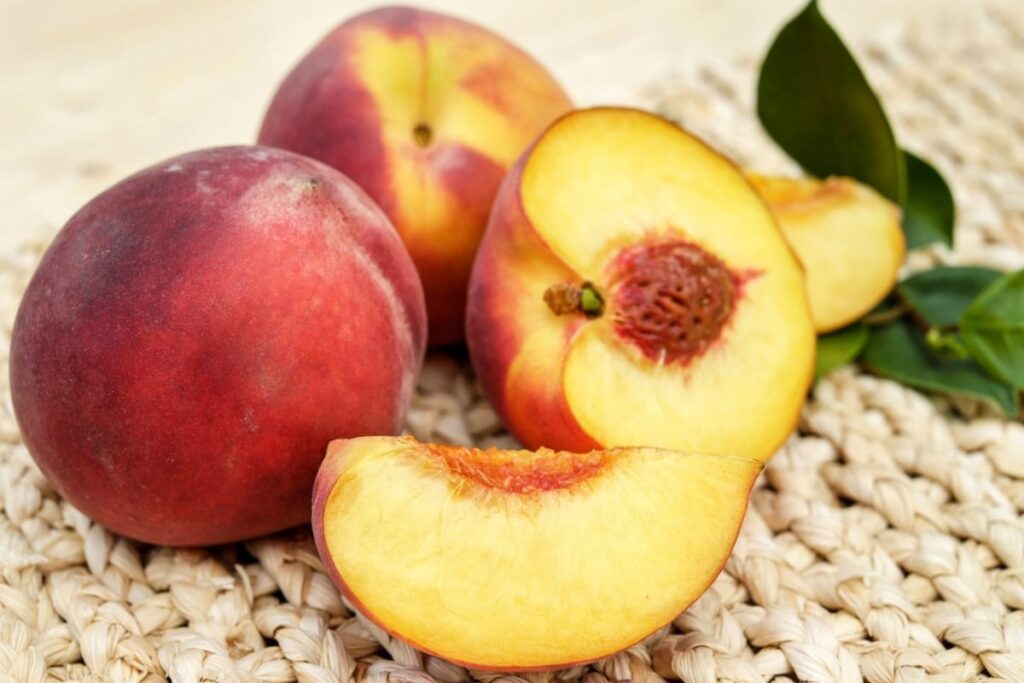
Admittedly, peaches aren’t as low in sugar as some of the other fruits on this list, weighing in at 13 grams per serving (1 peach).
Despite this, peaches are still technically considered low-sugar by comparison to other high-sugar fruits.
That said, if you are diabetic, please consult your doctor to find out how often you should eat peaches.
Strawberry (Fragaria X Ananassa)
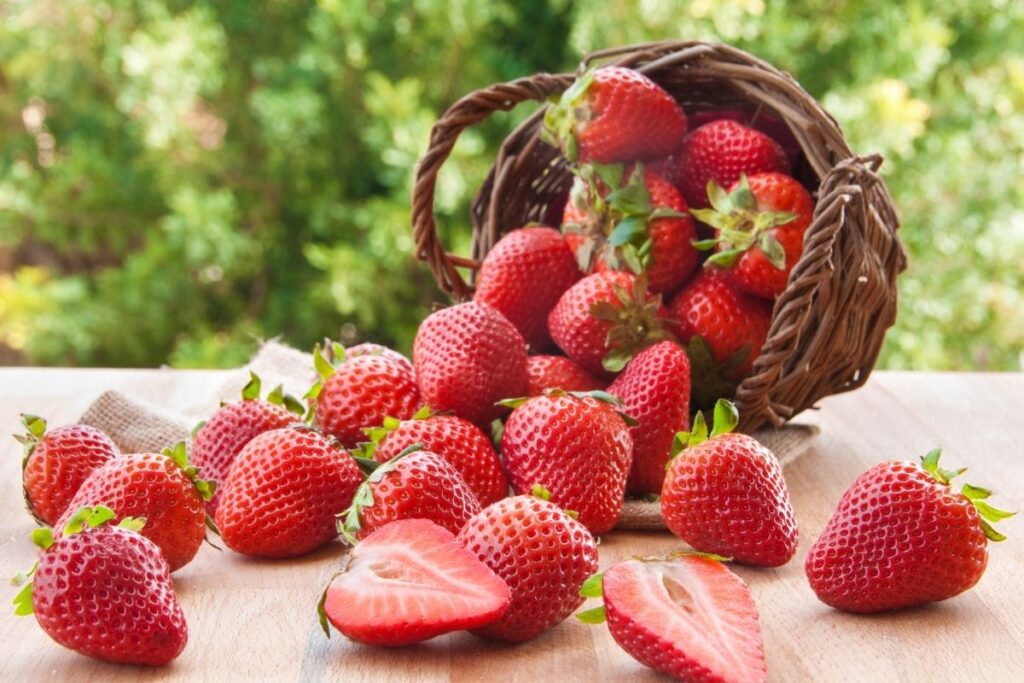
Don’t be fooled by the sweet taste of strawberries – these fruits are low in sugar, with just 7 grams of sugar in each cup.
There are numerous additional benefits to consuming strawberries, such as the high levels of vitamin C (one cup provides more than an adult’s daily amount!), lots of fiber, and regulatory effects on blood pressure.
Apple (Malus Domestica)
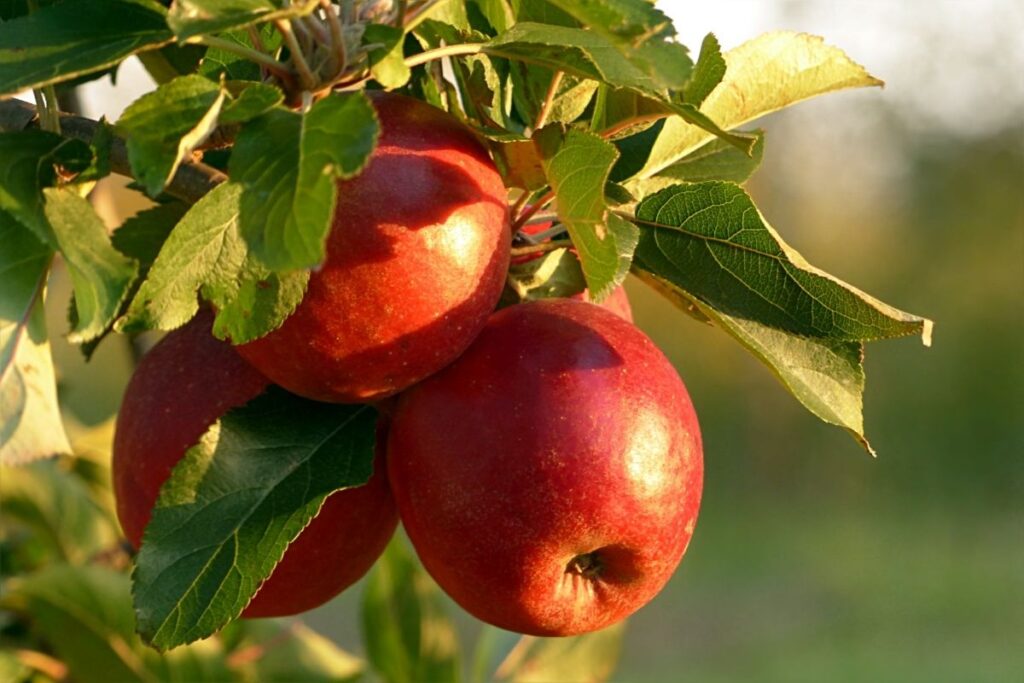
Apples are readily available in most grocery stores and are easy to grow in your garden, so the fact that they are also fairly low in sugar is a great bonus.
One apple contains 10 grams of sugar, which isn’t a super low amount, but it’s also definitely not high as far as most fruits are concerned.
You might not want to be snacking on apples all day if you have high blood sugar, though.
Kiwi (Actinidia Deliciosa)

Did you know that kiwis are technically berries?
If you didn’t, you might also not be aware that kiwis are low in sugar!
The average kiwi contains just 6 grams of sugar, and these fruits are also excellent sources of vitamin C.
They contain high amounts of dietary fiber for easy digestion and your body will benefit from the antioxidants.
Lemon (Citrus Limon)

Okay, we get it – lemons aren’t exactly the most delicious fruit to bite into.
However, one huge benefit of lemons is their low sugar content, with only 1 or 2 grams of sugar per lemon.
They are also one of the best fruits for vitamin C. Plus, there are plenty of ways to incorporate lemon into your diet, including adding lemon juice or slices to your water.
RELATED: Maranta Lemon Lime: An Easy to Follow Care, Propagation, and Watering Guide
Papaya (Carica Papaya)
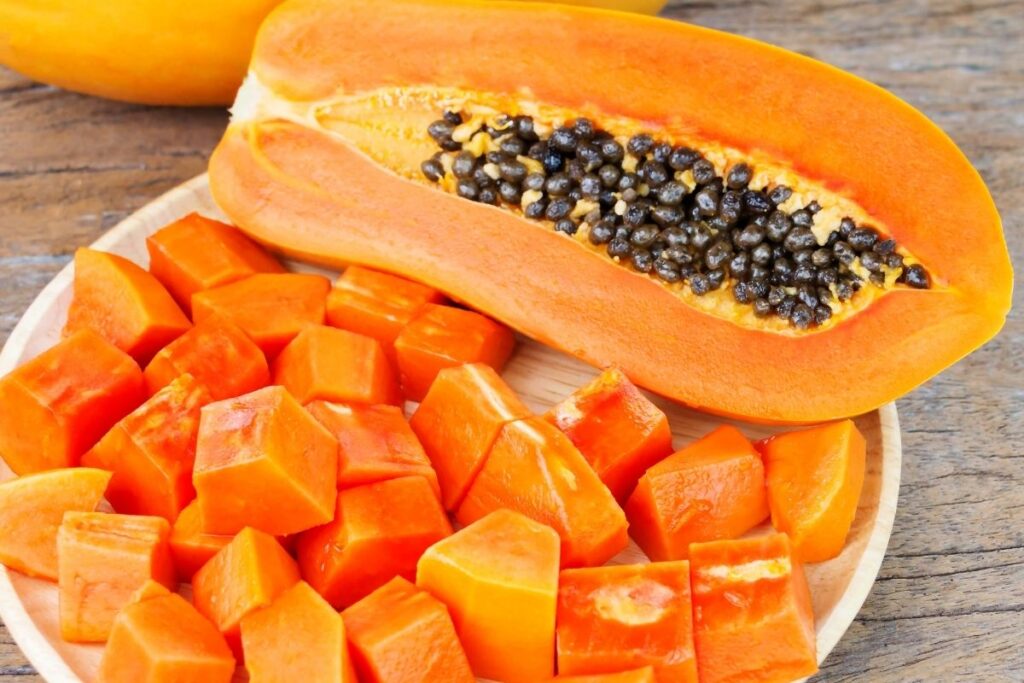
Papaya contains about 11 grams of sugar per cup, which isn’t extremely low, but still low enough for papaya to be classed as a low-sugar fruit. In addition to not being high in sugar, papayas are great for you because they are high in fiber, folate, and vitamin A, all of which are vital for human health.
Asian Pear (Pyrus pyrifolia)
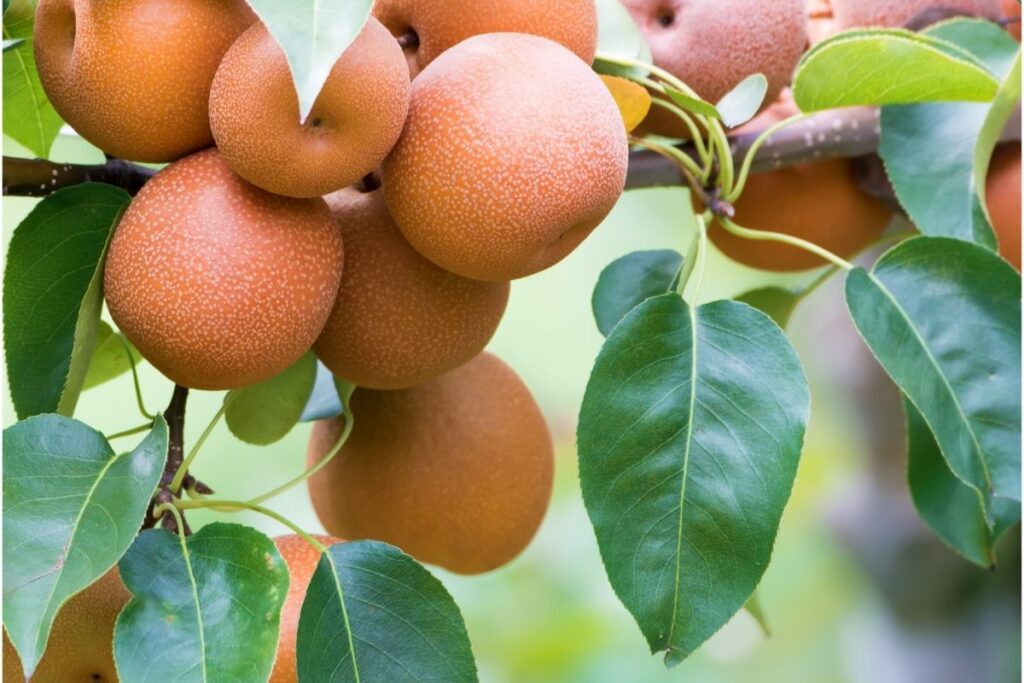
Regular pears are quite high in sugar, so they’re not the best choice if you’re trying to limit your sugar intake. However, Asian pears are a lower-sugar option, at 9 grams per serving.
In fact, Asian pears are low in calories in general, while being high in Potassium, vitamin C, and vitamin K, so there are plenty of reasons to enjoy Asian pears guilt-free.
Cantaloupe (Cucumis melo var. cantalupensis)
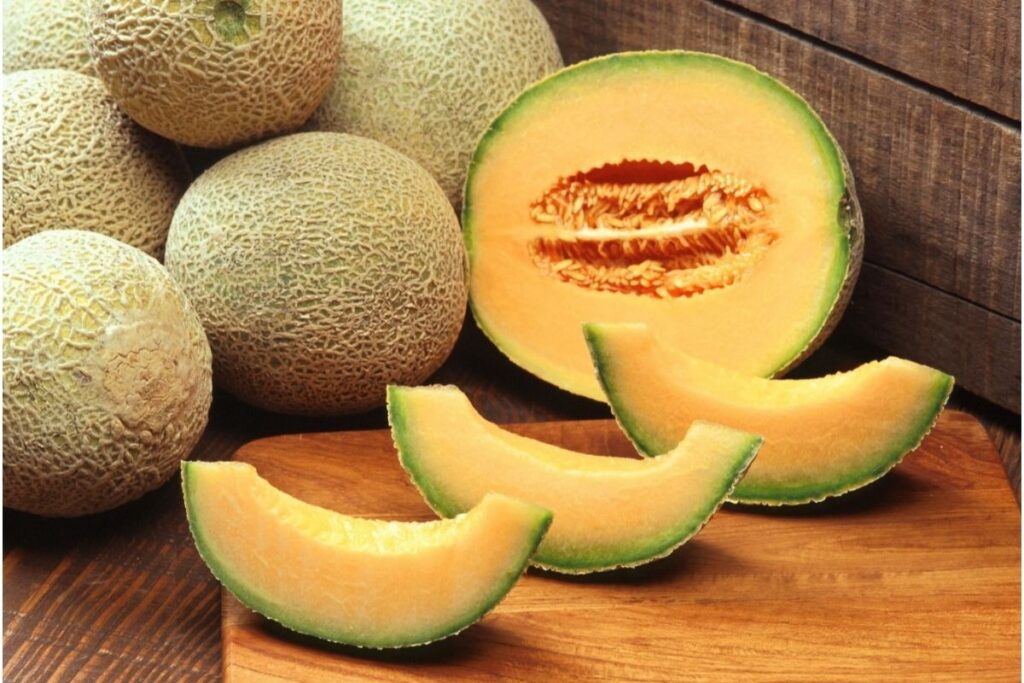
Cantaloupe is a type of melon that is good for low-sugar diets.
While we wouldn’t recommend eating large quantities of cantaloupe on a regular basis if you have high blood sugar (it still has 13 grams of sugar per cup), these melons are comparatively considered to be low in sugar.
They are high in vitamin A, though, which is a bonus.
Lime (Citrus Aurantiifolia)
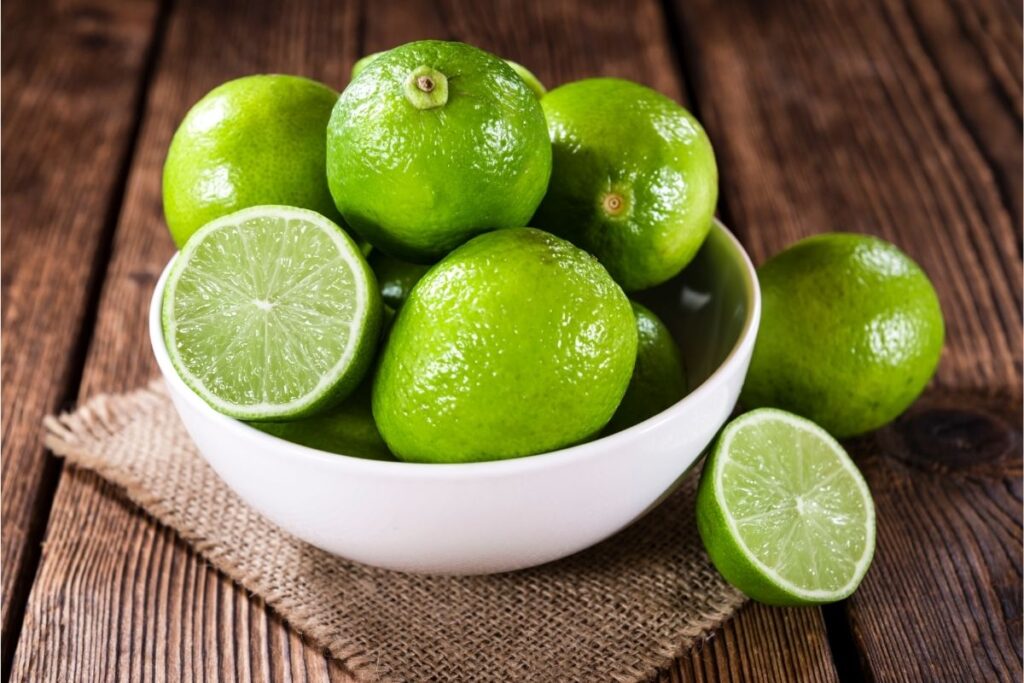
Like lemons, limes may not be the first fruits that come to mind when you’re looking for a tasty snack.
However, these citrus fruits are low-sugar, making them a safe choice of fruit for most people who want or need to limit their sugar intake.
There are only 1 to 2 grams of sugar in each lime, but plenty of vitamin C.
Avocado (Persea Americana)
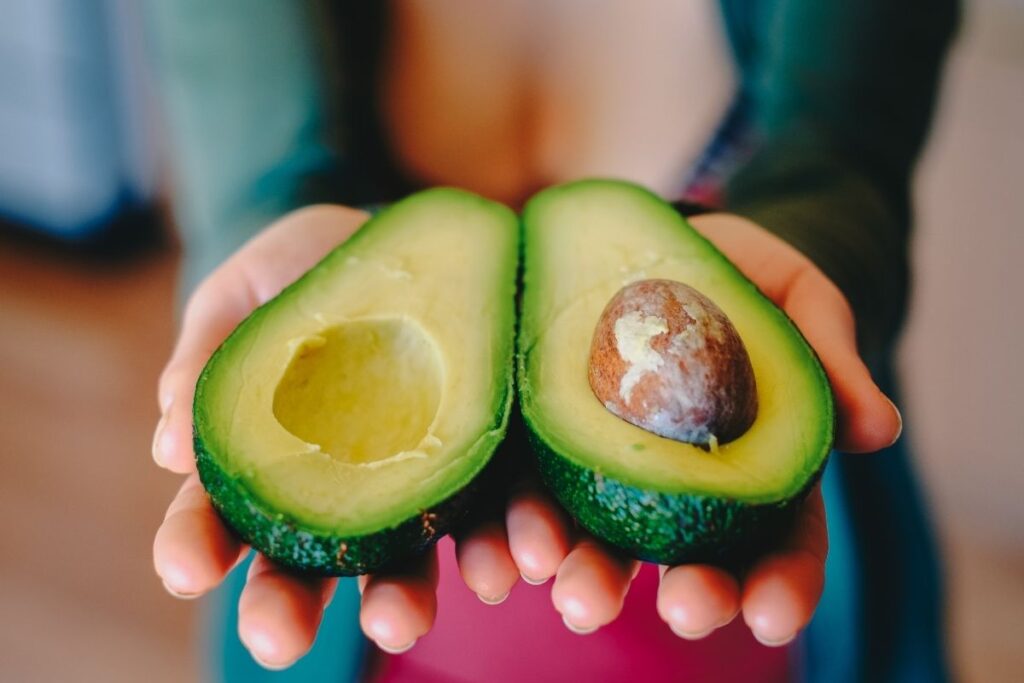
That’s right – despite its savory flavor, avocado is a fruit!
As you can probably tell from how avocados taste, these fruits are not high in sugar. 100 grams of avocado contains just 0.7 grams of sugar, making it one of the lowest sugar fruits.
Avocados are, however, high in healthy fats and plant-based protein.
RELATED: 31 Different Types Of Avocado Trees (Including Photos)
Grapefruit (Citrus X Paradisi)
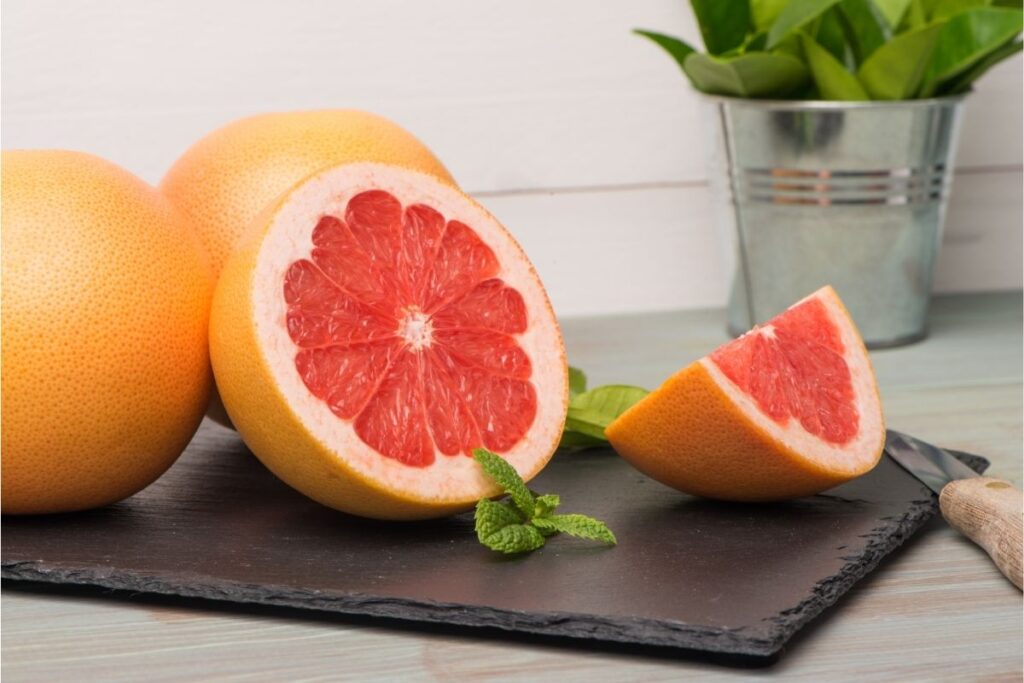
Another citrus fruit to add to your low-sugar inventory is Grapefruit!
Grapefruits have a sour flavor, so it’s no surprise that this fruit has just 7 grams of sugar per 100 grams.
Grapefruit is known for packing a punch of antioxidants and providing lots of vitamin C in addition to other vital nutrients.
Orange (Citrus X Sinensis)

Oranges are a sweeter alternative to limes, lemons, and grapefruits, so if you can’t handle sourness but need to keep your sugar levels low, it’s a great option.
For every 100-gram serving of orange, you’ll be getting 9 grams of sugar. Grapefruit can also help your body to absorb iron and is thought to boost immunity.
Plum (Prunus Domestica)
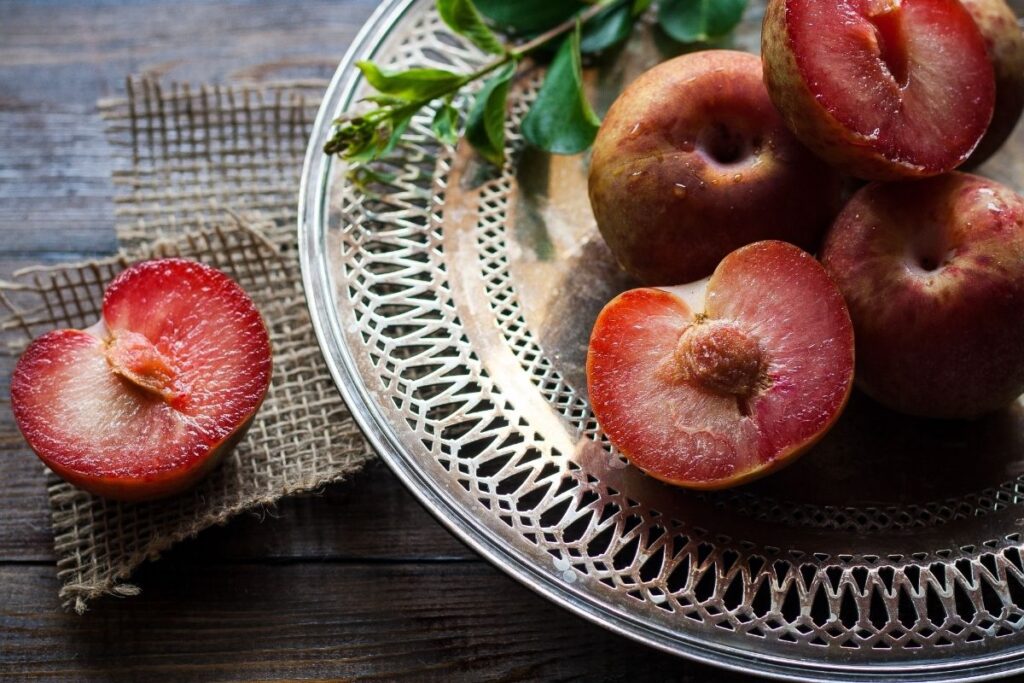
There are many other reasons to make plums a staple fruit in your diet, from their rich antioxidant content to their ability to improve bone health.
They also contain adiponectin – a hormone that helps to regulate blood sugar.
Watermelon (Citrullus Lanatus)

Watermelons contain 6 grams of sugar for every 100 grams.
Although watermelons taste sweet, they are mostly made up of water, so it makes sense that they don’t actually have very high sugar content.
With that being said, watermelon has a high glycemic index, meaning it can cause blood sugar to shoot up after eating.
Guava (Psidium Guajava)
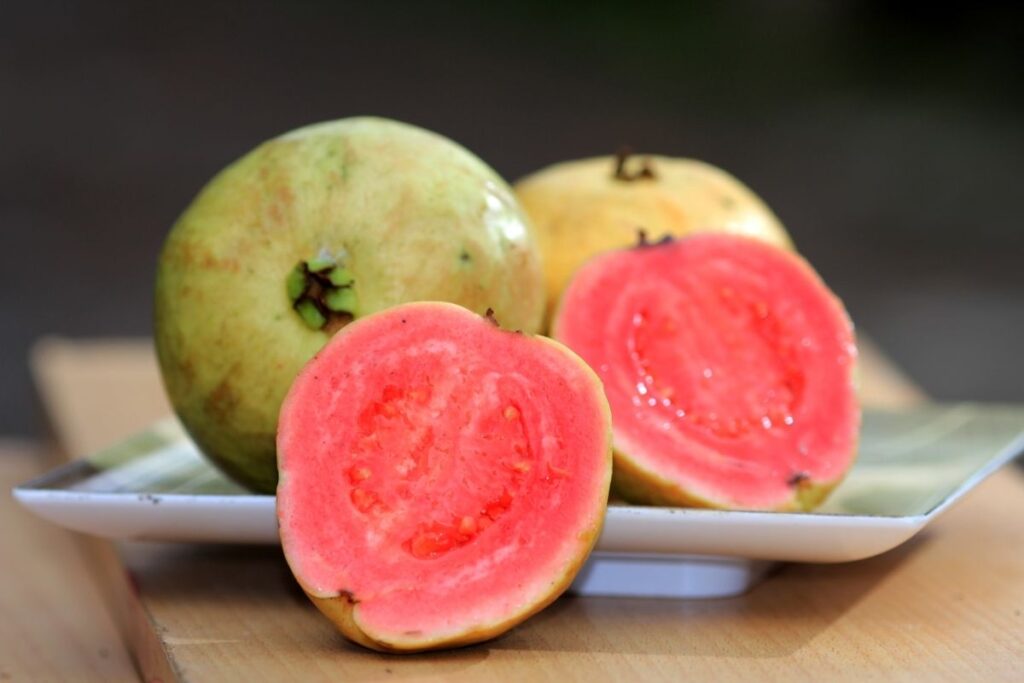
A 100-gram serving of guava contains 9 grams of sugar, making this another low-sugar option for fruit lovers.
Studies have actually shown that guavas may help to lower blood sugar while improving cardiovascular health and facilitating healthy digestion, so why not try adding this fruit to your plate?
Honeydew Melon (Cucumis Melo L. ‘Honeydew’)
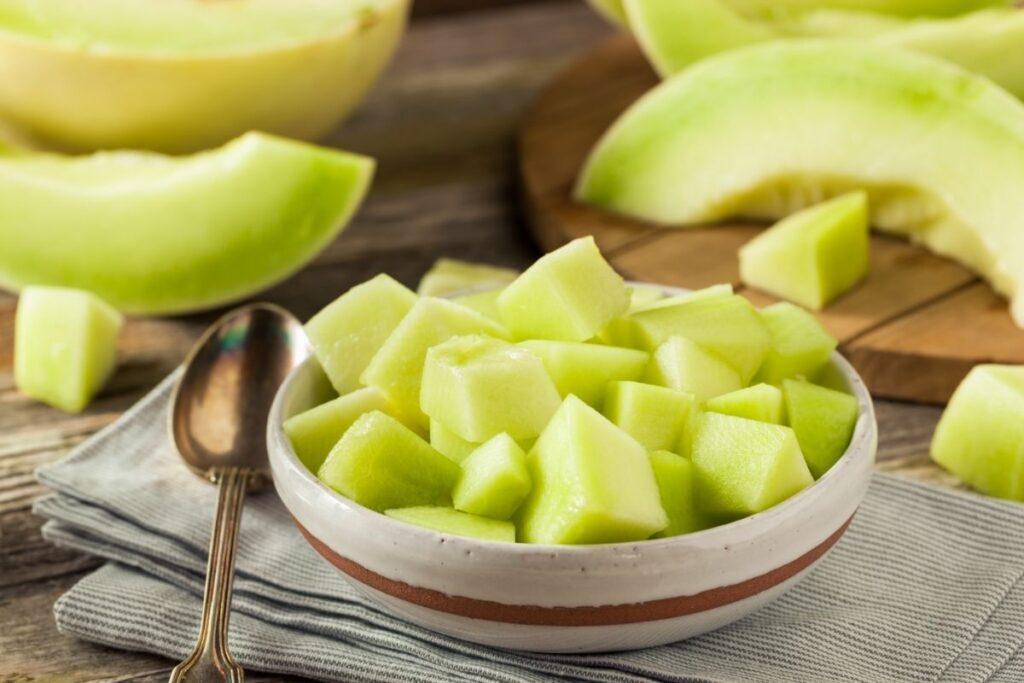
Honeydew melon might sound like an unsafe choice if you’re trying to lower your sugar intake because of honey’s sweet connotations.
However, honeydew melon only has 8 grams of sugar per 100 grams.
Honeydew melon might temporarily cause blood sugar to rise, but studies suggest that it may help to improve blood sugar regulation over time.
Tomato (Solanum Lycopersicum)

Like avocado, tomato is often thought of as a vegetable when it’s actually a fruit. If you were to eat 100 grams of tomato, you’d only be consuming about 2.5 grams of sugar.
Moreover, tomatoes contain a fair amount of lycopene, which could reduce your risk of developing heart disease or even some forms of cancer during your lifetime.
Dragon Fruit (Hylocereus Undatus)
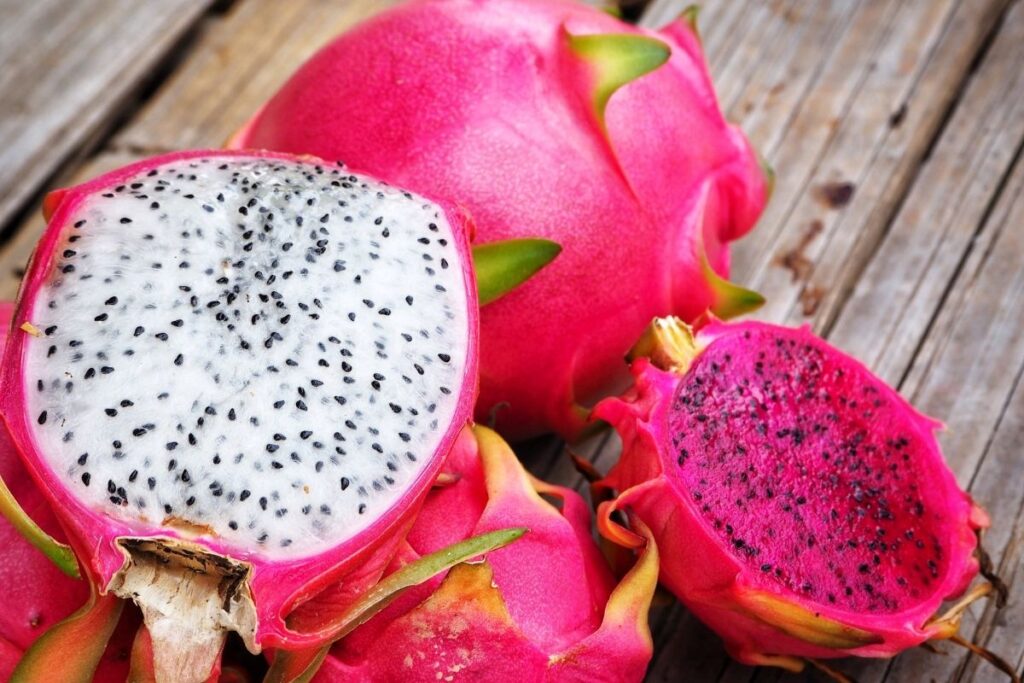
Dragon fruit isn’t the easiest fruit to get your hands on, but if you can find it, you’ll benefit from a delicious low-sugar snack!
Dragon fruit has a sugar content of just under 8 grams per serving, and like tomatoes, this fruit contains lycopene for heart health.
It’s completely fat-free and may even have a lowering effect on blood sugar in the long term.
Olive (Olea Europaea)
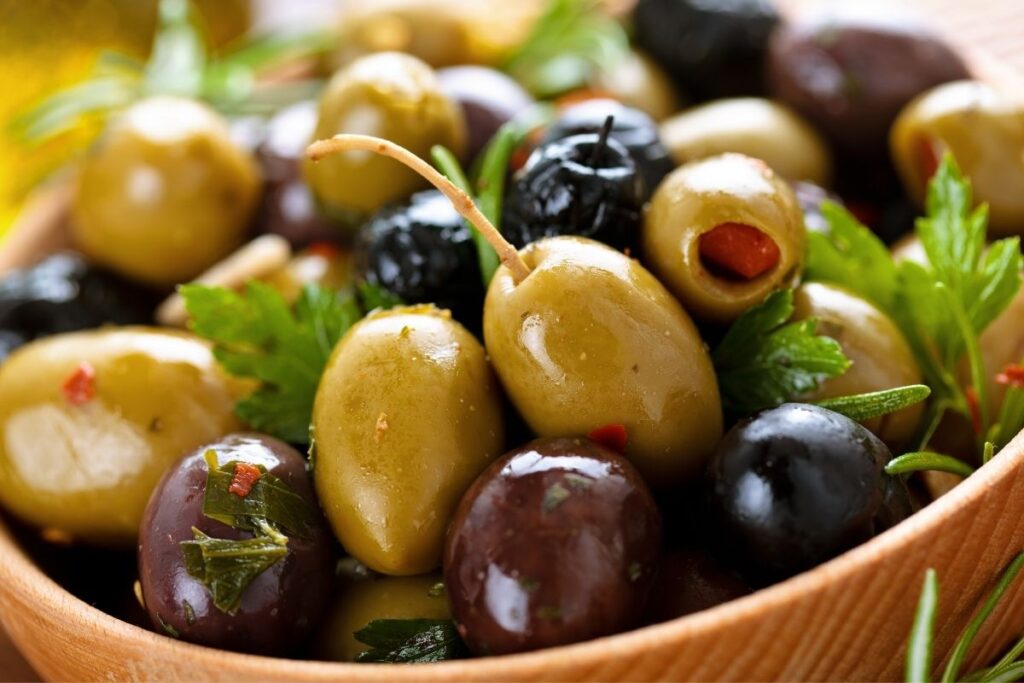
Not many people see olives as fruits, but technically, that’s exactly what they are.
A serving of olives has just 0.2 grams of sugar, and what’s more, olive oil is thought to help reduce blood glucose levels, actually minimizing the risk of diabetes.
Final Thoughts
Just because you’re trying to cut back on sugar, be it for medical reasons or otherwise, doesn’t mean you have to avoid fruits entirely!
In fact, fruit is a very important part of the human diet and some fruits can have a beneficial impact on blood sugar over time.
If you are looking for low-sugar fruits due to health reasons, please consult a medical professional before making any changes or introducing new fruits into your diet.







